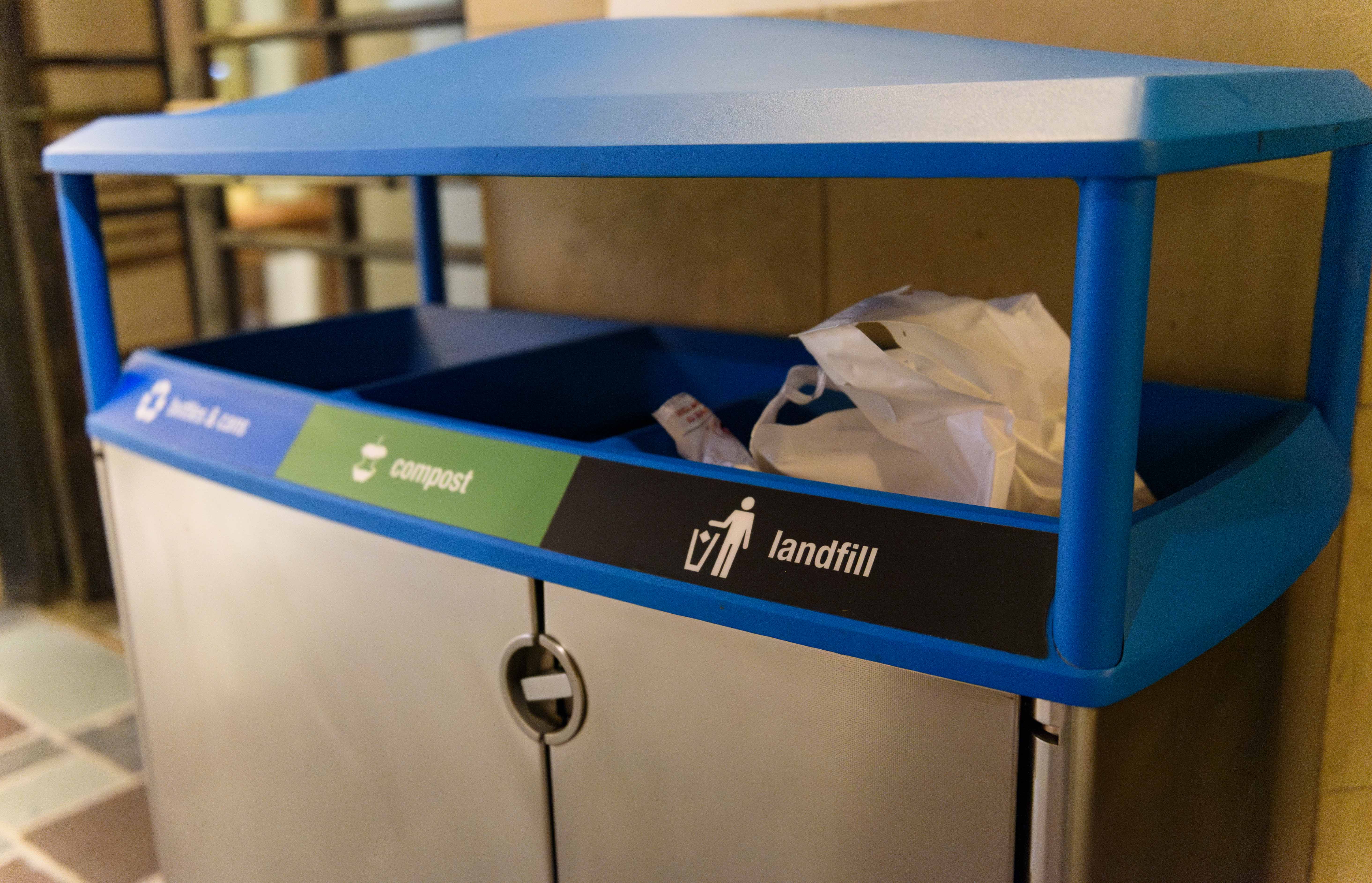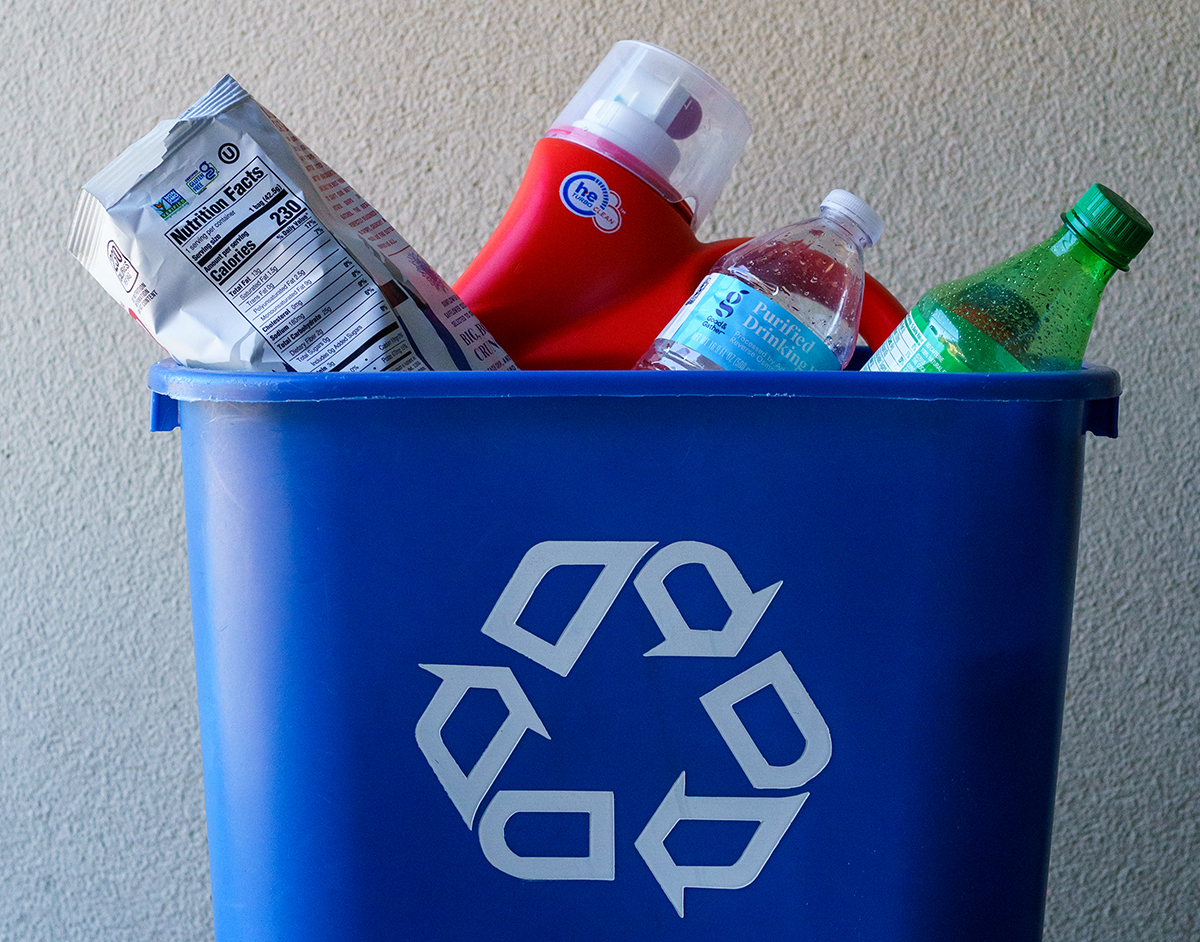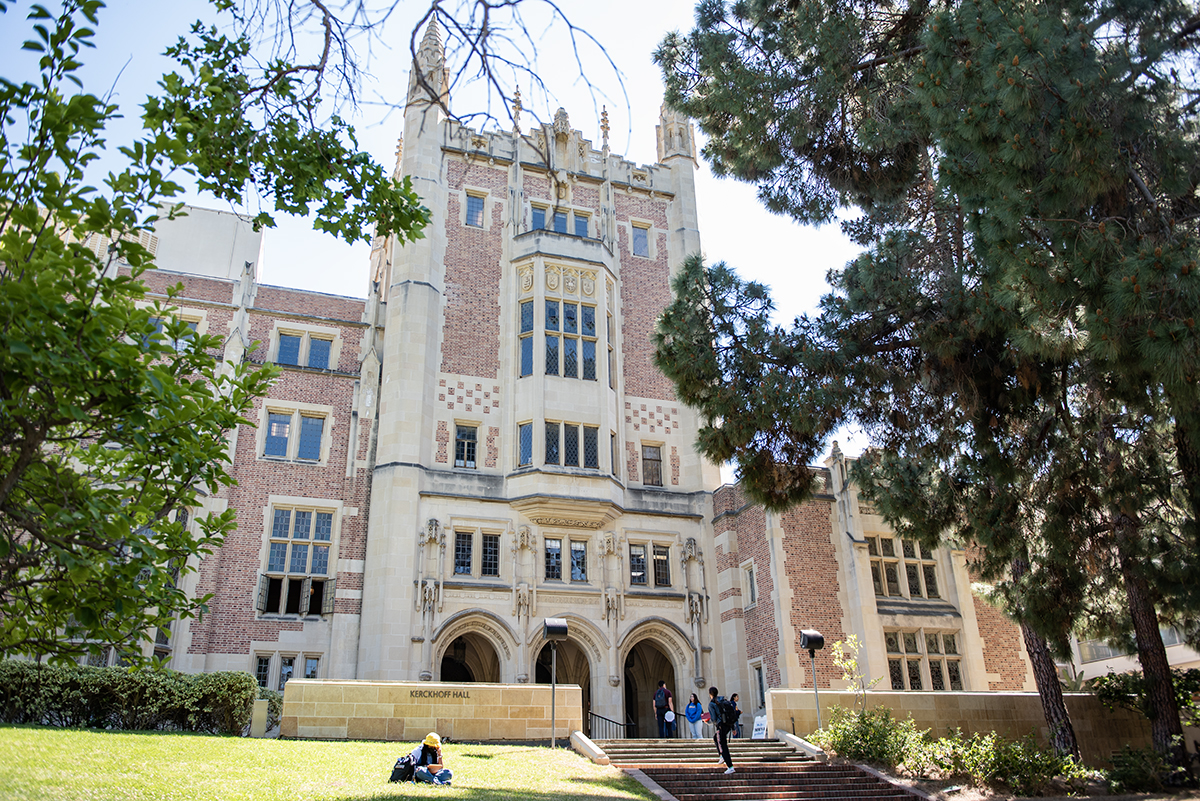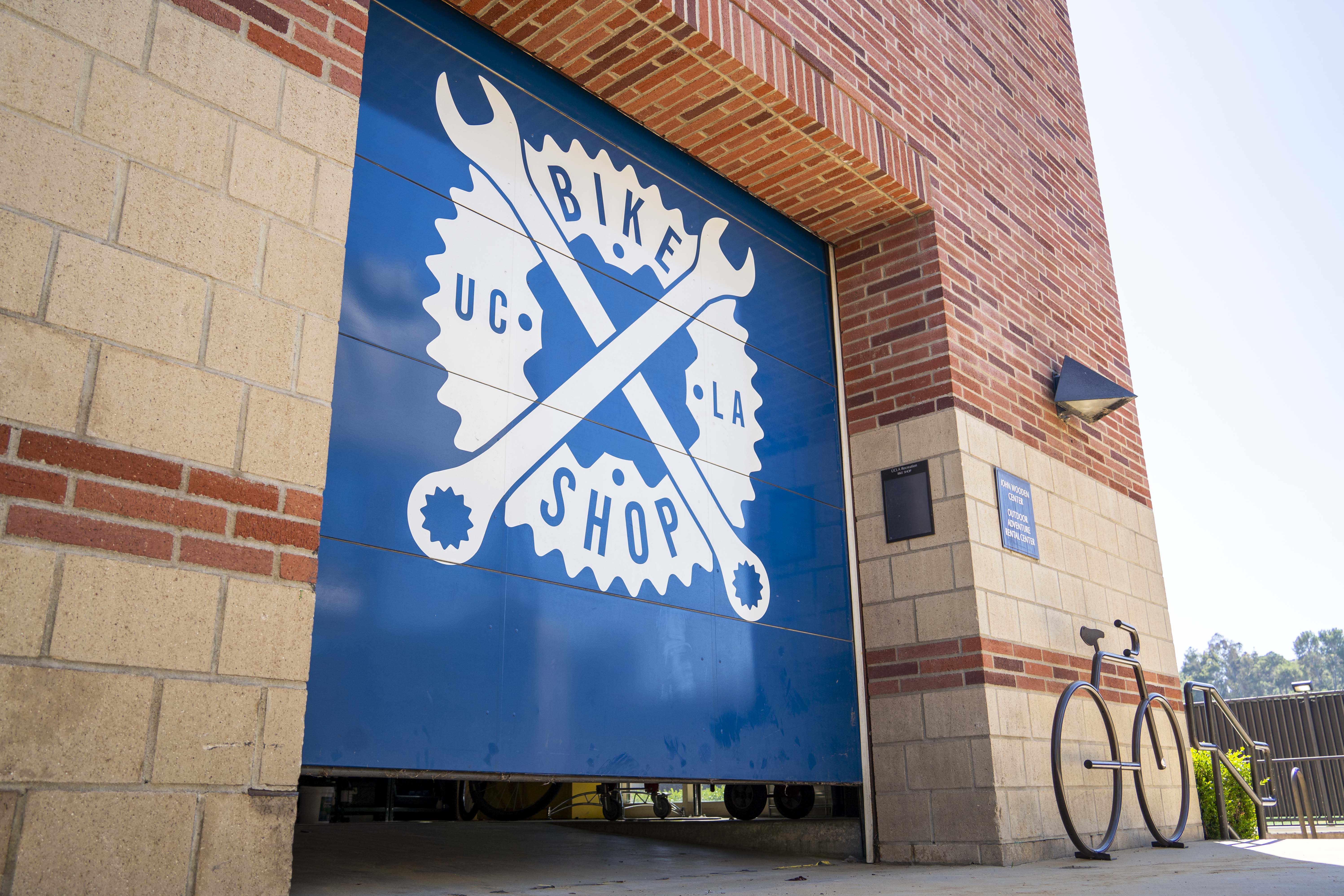UCLA community weighs in on recycling, zero waste initiatives

A UCLA garbage can is pictured. UCLA’s waste management system is split into three color-coded bins, which correspond to recycling, compost and landfill waste. (Myka Fromm/Assistant Photo editor)
By Saya Mueller
Nov. 15, 2023 12:56 a.m.
Thousands of pieces of trash are thrown away on campus every day, yet when first-year data theory student Andrew Huang walks up to the trio of blue, green and brown trash cans, he has to pause for a minute.
“Honestly, half of the time I’m like, ‘Does this go in here?’” he said. “I have to look at the pictures on the trash can to make sure I’m throwing it in the right bin.”
Huang is just one of a number of students who said they find it difficult to figure out which garbage can to use for their waste. According to an emailed statement from Ricardo Vazquez, a director of UCLA Media Relations, UCLA offers three different cans for recycling, compost and landfill waste – which correspond to the blue, green and brown bins, respectively – but he added that student cooperation is needed as the university works toward its zero waste goal.
Compost bins were introduced in 2018 and placed near takeout dining halls as part of UCLA’s zero waste initiative, which includes a 90% diversion rate – or percent of waste sent to locations besides the landfill – by 2025, Vazquez said in the statement. According to the quarterly 2021-2022 FY Waste Report published by the UCLA Office of Sustainability, the diversion rate for the general campus ranged from 43-49% over three quarters, while the diversion rate for on-campus housing ranged from 34-44%, around half of the diversion rate goals for 2025.
Park Williams, a professor of geography at UCLA, said seeing the recycling, compost and landfill bins all over campus is a great indication that UCLA’s initiatives are moving in the right direction.
“There are tens of thousands of people on this campus, and these tens of thousands of people are producing immense amounts of waste,” Williams said. “If we can channel the waste from this gigantic group of people to the right places, then that is, in all likelihood, a good thing for the environment.”
Olivia Wu, a first-year molecular, cell and developmental biology student, said she feels that students should have a better understanding of the waste disposal systems at UCLA in order to reduce discarded waste overall.
“It’s definitely important to understand where our waste goes, because in this world, oftentimes when we throw things in the trash can, we just discard it and don’t look … where the waste goes,” she said.
Wu added that even though she tries to be environmentally conscious, she also sometimes finds it difficult to decide which trash can to use. She said when she throws away containers with food remnants, she is not always sure if they belong in the recycling or trash bin.
Kendall Kay, a first-year microbiology, immunology and molecular genetics student, said students will sometimes throw away their trash in the most convenient bin, even if it is the wrong one.
Like Huang, first-year biology student Andrea Garcia said she tends to rely on the pictures drawn above the bins to figure out where her trash belongs.
Garcia also said she feels that not many students follow recycling protocols at UCLA.
“I see a lot of people throw it in there like they don’t care,” she said.
Despite UCLA’s waste management efforts, a large part of the zero waste effort relies on student participation and awareness, Vazquez said in the statement. He added that although the discarded waste in all three categories goes through a baseline sorting process, some levels of contamination – such as recyclables in the compost bins or organic waste in the recyclables – cannot be addressed.
“We still have a great deal of work to do, but also need members of the community to help us by using the resources we provide and following the signage,” he said in the statement. “Too much contamination in the compost bin results in organic waste going to landfill and not getting composted.”
Vazquez also said in the statement that most recyclables are sent to a facility in Sun Valley to be sorted by Athens Services, a family-owned recycling and waste collection company. However, recyclables deposited in landfill bins are sent to Chiquita Canyon Landfill along with all other landfill waste because there is no sorting process to separate recyclables from landfill, he said.
Recycling containers and compactors with more than 10% waste are also rejected and sent to the landfill, which means that students bear significant responsibility to properly sort their trash at the outset, he added in the statement.
Huang added that the system encourages students to be more sustainable, which he thinks is a good thing.
Williams said that although the three options of recycling, compost and landfill may seem a bit confusing at first, they are better than having no options. Williams added that he hopes students will learn more about waste management through their experiences at UCLA.
“Tens of thousands of people here on this campus are here to learn,” he said. “If they learn about waste management through the experience of having it being carried out here on the campus in a thoughtful way, then they will be likely to carry those values for the rest of their lives.”





